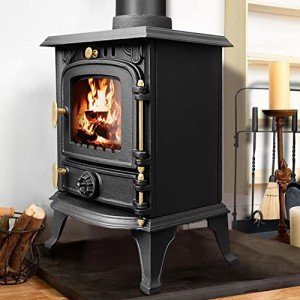The Multifuel Stove: An Efficient and Versatile Heating Solution
In an age where energy performance and sustainability are critical, lots of families are turning to multifuel stoves as an alternative heating option. These versatile devices can accommodate numerous fuel types, consisting of wood, coal, and biomass, making them a popular choice for homeowners aiming to lower their environmental impact while saving on energy costs. Multi Fuel Burners Near Me looks into the functions, advantages, installation considerations, and upkeep of multifuel stoves, providing a comprehensive overview for possible users.
What is a Multifuel Stove?
A multifuel stove is a heating device developed to burn more than one type of fuel. While standard wood stoves focus entirely on burning firewood, multifuel stoves provide the flexibility to use various fuel sources without sacrificing performance or effectiveness. his explanation are geared up with robust elements that permit them to manage the differing combustion qualities of alternative fuels.
Key Features of Multifuel Stoves
When considering a multifuel stove, look for the following key features:
| Feature | Description |
|---|---|
| Material | Made from premium steel or cast iron for sturdiness and heat retention. |
| Fuel Options | Efficient in burning wood, coal, peat, and particular kinds of pellets. |
| Effectiveness Rating | High-efficiency designs convert a significant portion of fuel into usable heat. |
| Air Control System | Adjustable air inlets to regulate the combustion rate, improving efficiency. |
| Size Diversity | Offered in numerous sizes to fit various areas, from small rooms to larger areas. |
Benefits of Using a Multifuel Stove
Multifuel stoves offer various benefits, making them an appealing choice for house owners:
- Versatility: Users can select from various fuel types based on accessibility and cost, creating opportunities for cost savings.
- Cost-Effective: Multifuel stoves can produce considerable savings on heating expenses, specifically in areas where wood or coal is more economical than gas or electricity.
- Sustainability: Burning renewable fuels like wood and biomass lowers carbon footprints, interesting environmentally conscious consumers.
- Enhanced Heat Output: Many multifuel stoves supply considerable heating capabilities, ensuring homes remain warm even during severe winter conditions.
- Independence from the Grid: Users can depend on their stoves in emergency situations or in areas where conventional heating sources may not be accessible.
Typical Fuel Types Used with Multifuel Stoves
The list below fuels are typically utilized in multifuel stoves:
- Wood: The most popular option, offering a traditional atmosphere and heat.
- Coal: Offers a longer burn time and more intense heat but may need additional maintenance.
- Peat: A sustainable choice, specifically in regions where it is readily available.
- Pellets: Made from compressed sawdust, pellets supply high energy performance and ease of handling.
Installation Considerations
Setting up a multifuel stove includes several essential considerations to ensure security and performance:
Steps for Proper Installation
- Select a Location: Choose a suitable area that makes the most of heat distribution and satisfies clearance requirements.
- Chimney Requirements: Confirm that your home's chimney system can accommodate a multifuel stove. A devoted flue might be essential.
- Expert Installation: Engage a qualified installer to adhere to regional building regulations and security regulations. Appropriate setup considerably lowers threats of fire and carbon monoxide poisoning.
- Hearth Construction: It is essential to build a non-combustible hearth to secure floor covering from heat damage.
Safety Precautions
- Make sure sufficient ventilation in the room to avoid the buildup of harmful gases.
- Routinely inspect and clean up the chimney to get rid of blockages that might lead to dangerous circumstances.
- Have a working carbon monoxide gas detector close by as a necessary precaution.
Maintenance of Multifuel Stoves
Regular upkeep is important to the longevity and performance of a multifuel stove. Here are important upkeep tasks:
- Clean the Stove: Regularly eliminate ash and soot from the firebox to guarantee optimum airflow.
- Examine the Chimney: Schedule yearly inspections to promote proper function and safety.
- Examine the Seals: Ensure door seals are undamaged to avoid smoke leak and keep performance.
- Fuel Storage: Store fuels in a dry, protected place to enhance burning quality.
Frequently Asked Questions about Multifuel Stoves
1. Can a multifuel stove burn both wood and coal simultaneously?
While some multifuel stoves can burn numerous fuels together, it's generally recommended to burn one type of fuel at a time for ideal effectiveness and efficiency.
2. The length of time can I expect my multifuel stove to last?
With appropriate maintenance and care, multifuel stoves can last 10 to 25 years, with higher-quality products generally offering longer lifespans.
3. Are multifuel stoves safe to use inside?
Yes, as long as they are effectively installed, well-ventilated, and routinely kept. Always follow the manufacturer's safety standards.
4. What are the downsides of utilizing a multifuel stove?
Some prospective drawbacks consist of the preliminary cost of installation, the requirement for routine upkeep, and the requirement of appropriate fuel storage.
5. Can I install a multifuel stove myself?
It is recommended to look for expert assistance to ensure all security standards and regional guidelines are met.
Multifuel stoves stick out as an excellent service for efficient home heating, offering versatility and substantial expense savings. Their capability to burn different fuel types makes them appropriate for regions with various heating requirements and fuel resources. With appropriate setup and maintenance, a multifuel stove not just functions as a reputable heating source but likewise contributes to a greener planet. As energy costs increase and environmental awareness boosts, adopting a multifuel stove could prove to be a valuable investment for many house owners.

